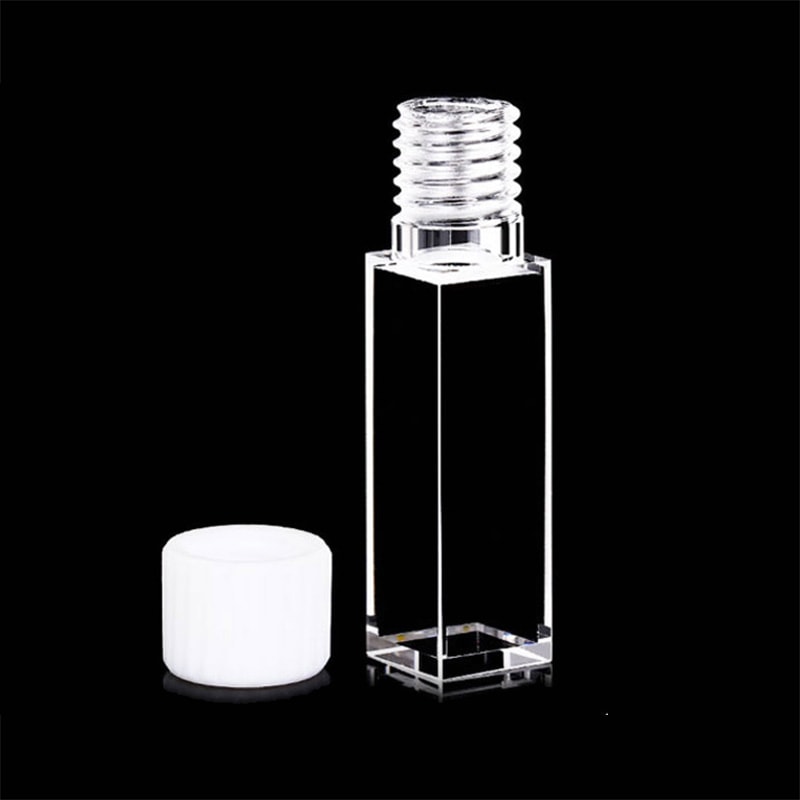Spectrophotometry, which reveals the mechanisms behind light transmission and absorption in certain wavelengths, is an important method of scientific discovery. Its heart is the cuvette, which is a small but essential vessel that stores samples to be analysed. It may appear simple but their intricate structure that spans from the length of the paths for cuvettes to the choice of material which is the key to obtaining accurate information on the concentration of a substance and its high-quality. We’ll look into this fascinating realm that reveals how cuvette dimensions as well as size affect the results of each test.
Power of Cuvette Path length
Imagine that a beam is passing through a specimen. The result will depend on the length of the path in the cuvette. This is the amount of that light travels through the fluid. Many labs use standard cuvettes with one centimeter of path. This is the most ideal option for balancing practicality and sensitivity. Why is this important? The longer the length of the light path is, the higher the amount of light that is taken in. Therefore, the light signal is amplified with sample that is diluted. However, for concentrated solutions such as nucleic acids or proteins, a shorter length of path could be a game-changer. This decreases dilution and helps preserve precious samples, while also decreasing the preparation time. What’s the main takeaway from this? The art of matching path length to sample requirements is subtle and improves reliability.

Image credit: cuvet.co
Cuvette Dimensions and Size The Cuvette Dimensions and Size is More Than You Think
The size of the cuvette isn’t only about how much liquid is contained inside it’s about how the vessel works with the spectrophotometer. Each cuvette is designed to meet a specific task and comes in a range of sizes and shapes. Semi-micro cuvettes, as an example due to their smaller size and thicker wall thicknesses are designed to handle tiny volumes of samples. Think about a few nanoliters, or perhaps a rare biological extraction. The thicker walls reduce the volume inside, which allows light to pass without wasting any drops. This is a significant improvement over a standard cuvette. It needs less steps to pipette, offers less room for error and delivers results that are reliable. It’s a clever modification that demonstrates size isn’t just a numerical value, it’s also a strategic factor.
The 1 cm length of the Path Cube The 1 cm Path Length Cube: A Lab Favorite
Why is the cuvette with one centimeter of path length is so well-liked in a variety of experiments? It’s ideal to measure biological parameters when the samples are in short supply and milliliters count. This standard design offers consistent measurements of absorbance that don’t overburden the detector. It’s suitable for everything including DNA purity tests to enzyme tests. But it’s not a one-size-fits-all model. If you swap it out for a cuvette with distinct geometry or length, such as one used in emission studies, the results can be very different. The choice of the correct instrument is crucial, and not just using the one that you are familiar with. A cuvette that is not properly matched can be compared to an un tuned instrument.
Materials Matters: More Than Size and Path
Cuvette dimensions tell only half the story material choice seals the deal. Quartz and glass cuvettes are famous for their outstanding light transmission rates. They are durable and reusable. This makes them perfect for spectroscopy. On the other hand, plastic cuvettes offer affordability and ease of use. Utilize them and dispose of them. There’s no need to wash and there is no chance of cross-contamination. If you’re looking for aqueous solutions or fast DNA and RNA tests, they’re hard to beat. What’s the price to pay? Lower accuracy at certain wavelengths. For those who are a purist, quartz is preferred and pragmatists might choose plastic.
Precision in Practice
The variety of cuvettes is what makes them so attractive. With spacers, shorter paths can be utilized for handling concentration samples. The larger vessels are better suited for bulkier volumes. Each choice in length and size as well as the type of material have an effect on the research. This could affect the quality of the results. Imagine a laboratory measuring an uncommon protein: a semi-micro cuvette with an elongated path avoids diluting issues and provides reliable results quickly. Compare that to a slow change of cuvettes during the experiment, and the data is skewed. It is a great reminder that the smallest factors can have an enormous impact on the spectrophotometry.
Cuvettes are tiny, but they are a major part of. Cuvettes, which range from the 1 cm cuvette’s length, to custom dimensions help are able to bridge the gap between the measurement and the understanding. A cuvette that is right for you can transform an excellent measurement, regardless of whether you’re looking for purity or concentration or both, into an excellent measurement.
